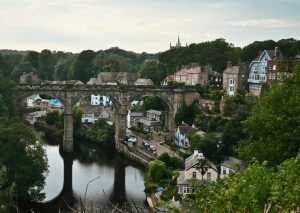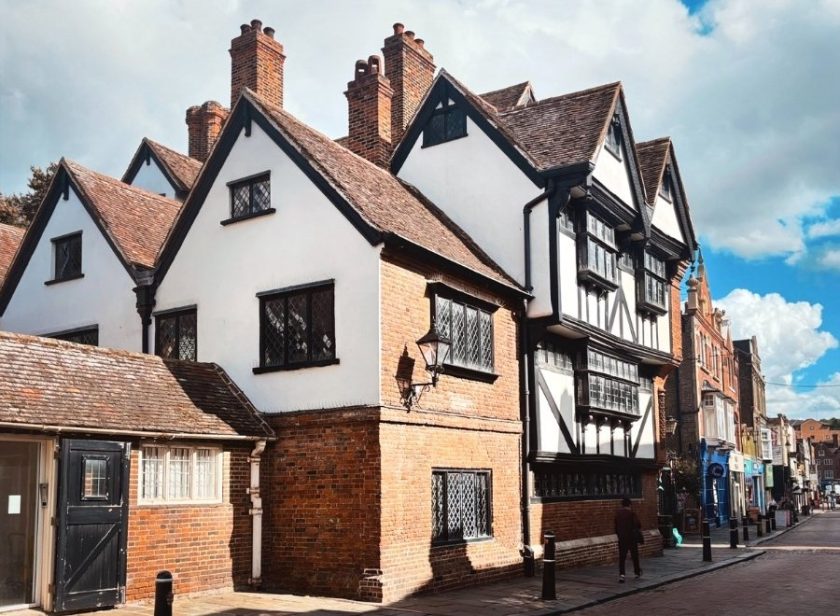
There are some wonderful places that are easy to reach from London, and Rochester is certainly one of them. Located in nearby Kent, this medieval town is filled with interesting history, literary connections, fabulous architecture and oodles of charm.
I wasn’t sure what to expect because it rarely pops up on the list of places to visit when people talk about day trips from London. So I initially thought it might just be, well, a bit meh.
Oxford, Cambridge and Bath are the usual trio of places that steal the limelight, and understandably so. You also have cute coastal towns like Whitstable and Rye that are firm favourites. Suddenly it’s easy to see how Rochester gets lost in the mix.
Now that I’ve been for myself, I’m happy to say my initial assumption was wrong. While big attractions include the castle and cathedral, there’s also an array of small museums all clustered together. Each tell the story of the people intimately connected to the town, most famously the novelist and social critic, Charles Dickens.
To give you a better idea of what to expect, Rochester isn’t all polished and manicured like some heritage towns. It’s a bit quirkier, a bit more local, and that’s why I really enjoyed my visit. It doesn’t feel touristy at all.
There were zero crowds, zero queues, zero tourist buses. It’s just not that kind of place despite all the history. It feels homely and lived-in and the people are friendly.
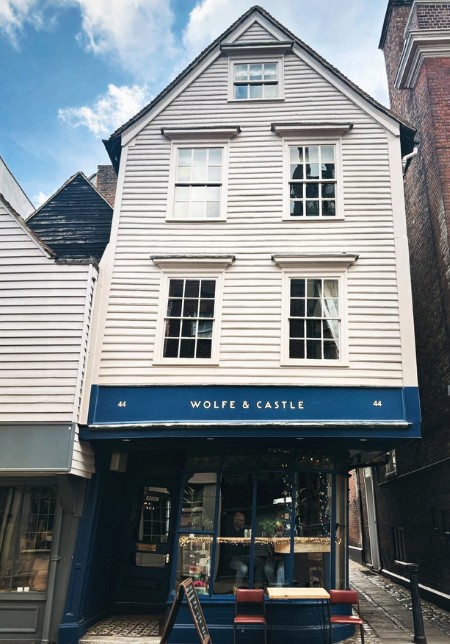
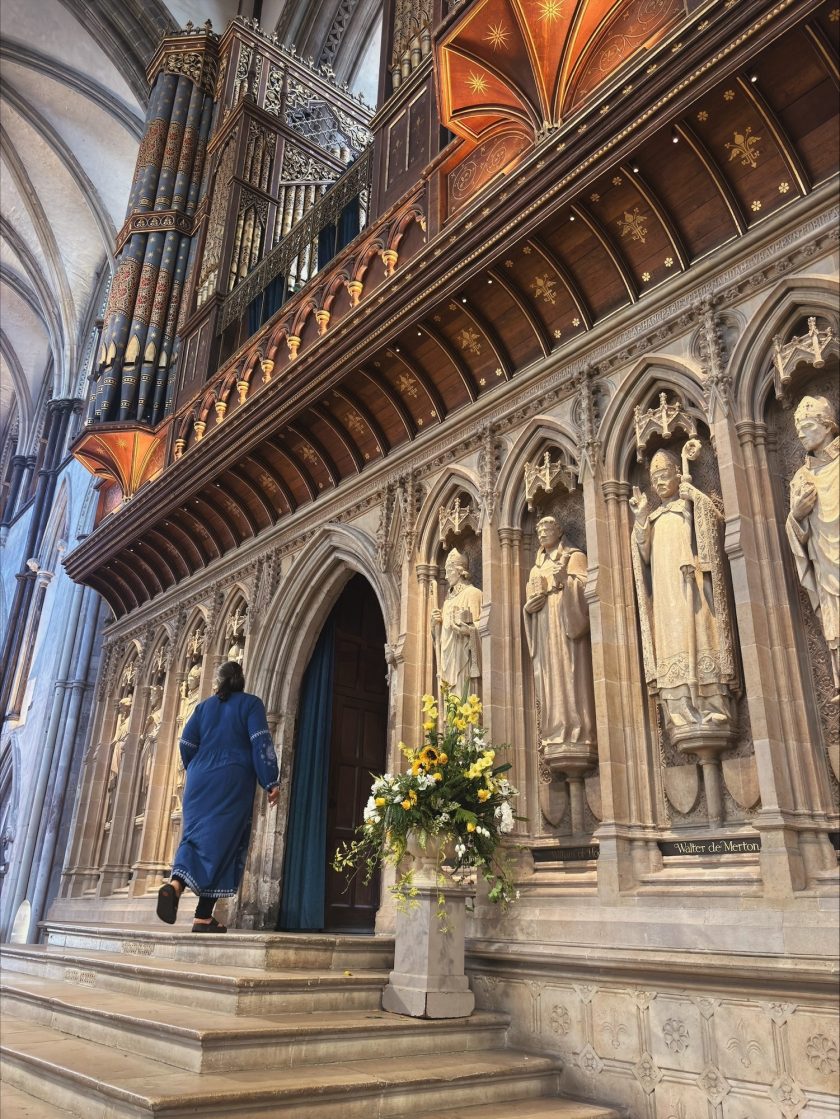
Getting there by train
Trains run frequently from London St. Pancras or London Victoria and take around 35–50 minutes. If you live near Stratford the journey shortens to 25 minutes. To get the best times and prices I recommend booking in advance via the Trainline. Look out for the fast journeys to give yourself more time exploring the sights and sounds of Rochester.
Once you arrive you’re practically in the centre. Easy peasy. Just cross over the road and take the route that passes through the side of the French hospital. It’s a nice introduction as you walk out onto the main high street (which is literally called High Street).
Lunch at The Cheese Room
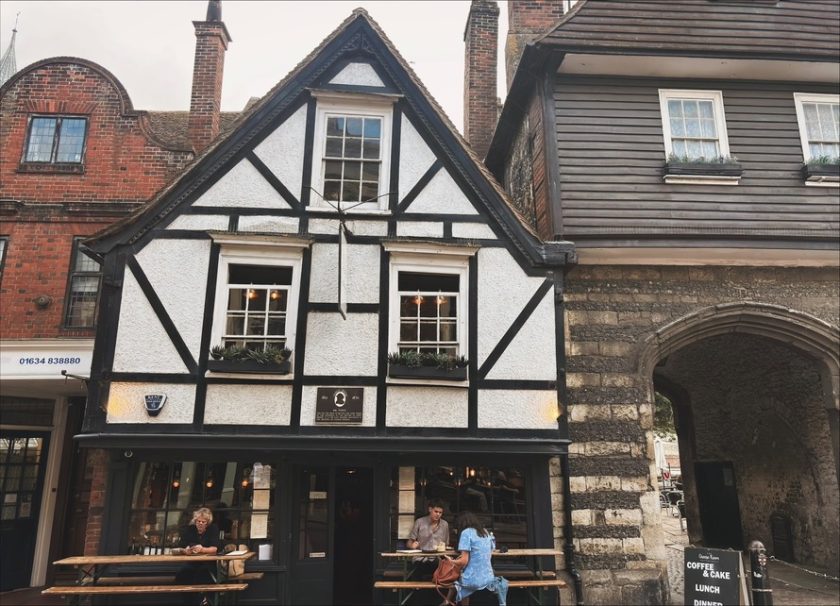
Before digging into the sights and sounds of Rochester, my travel companions and I first set about satiating our hunger. We made a bee-line to secure ourselves a seat at The Cheese Room. No guessing required as to their speciality!
We opted for a selection of five British cheeses hailing from various parts of Britain. Each one pleased the taste buds with their own tastes and textures. We spent a moment to ponder the best and ultimately the soft cheese from Somerset proved to be the most popular.
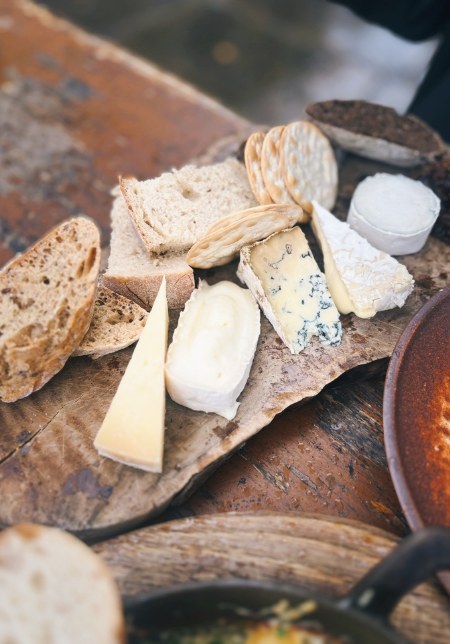
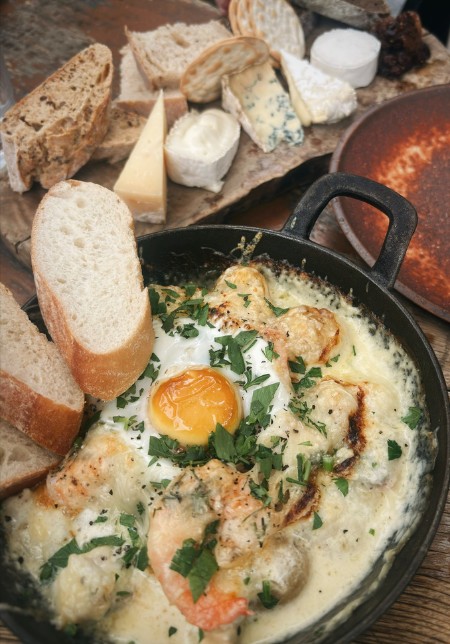
Just when we thoughts things couldn’t get any better, out came the sizzling seafood skillet. I demolished it and wasted no time mopping every last drop of creamy sauce with a slice of crusty white bread. I wanted to order the dish again, and had to muster up what little self-restrain I had to tell myself no.
Anyhow, time was ticking, so we paid the bill and began our sightseeing trip around town.
Things to do and see in Rochester
Rochester Castle

Rochester is most famous for its 12th-century castle that has seen more sieges than you’ve had hot dinners. It’s surprising that it has even survived this long.
Why was it built? After the battle of 1066, William the Conqueror and his men needed to keep control of a country that wasn’t exactly thrilled about being invaded. The answer? Castles. Big, intimidating, stone reminders of who was in charge. Rochester Castle, Tower of London and Dover Castle are the most famous examples from this period.
The stonework is fabulously preserved. Your imagination doesn’t have to stretch too far to envisage armoured soldiers stomping around this place with longbows slung over their shoulders and slingshots shoved in their pockets. Well that’s the nice stuff – I shudder thinking scenes filled with bloodshed and gore. That was a lot of that and I’m glad I wasn’t around to witness it!
The Cathedral
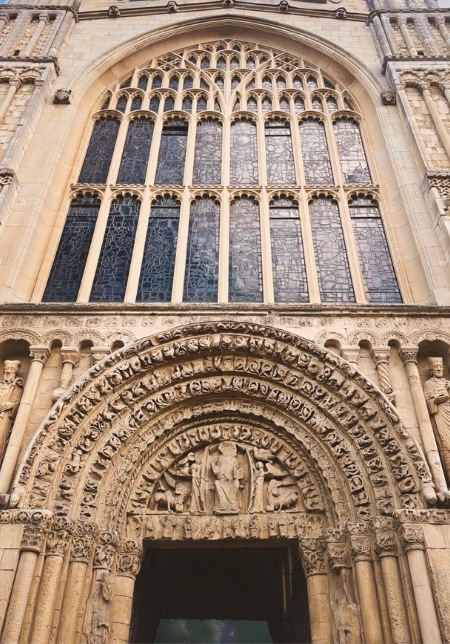
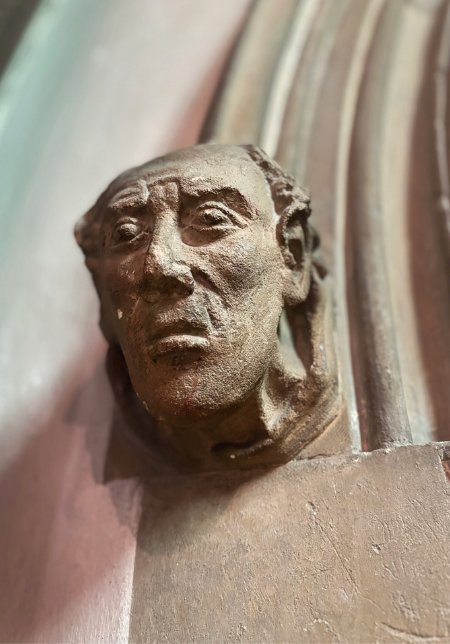
Right next door, Rochester Cathedral might not get the same hype as Canterbury or Westminster, but it should. It’s the second-oldest cathedral in England, founded in 604 AD, which means Christianity has been practiced on this site for over 1,400 years.
You can access the cathedral from the High Street, but I recommend entering from the West Door because the architecture is particularly beautiful. Be sure to look at the gargoyles above pulling silly expressions and grimacing at those who enter the Cathedral doors.

The quire is gorgeous. Decorative organ pipes stretch up to the ceiling and colours of deep red and speckles of gold illuminate the walls.
On the right hand side, look out for a rare medieval wall painting. It is the Wheel of Fortune and dates from the 1200s. What you see today is just half of it, sadly the rest was destroyed during the Reformation.
It depicts a wheel controlled by Queen Fortuna, as the wheel turns, people gradually climb their way upwards. It captures a medieval worldview that still resonates. The idea that life is cyclical, that no position – no matter how high – is guaranteed forever. In other words: even the mighty can fall.
Restoration House & beautiful gardens
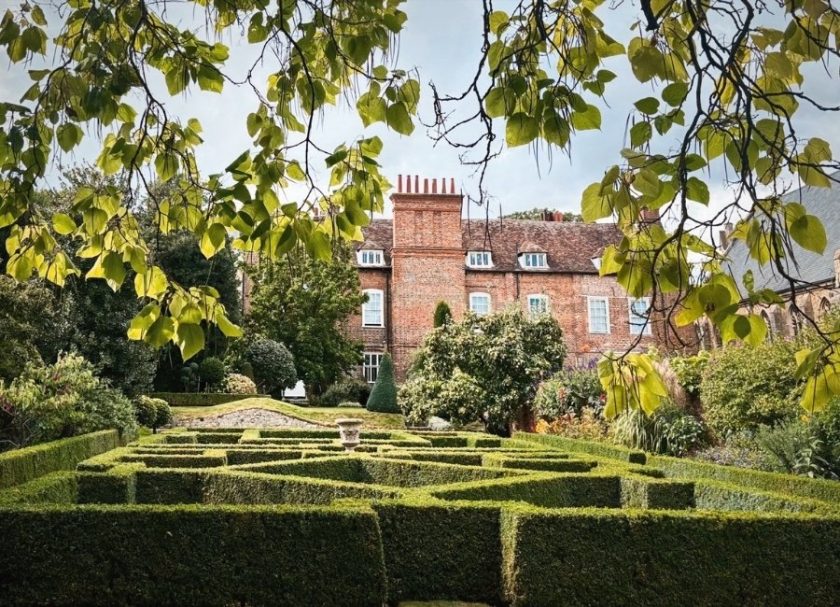
Restoration House feels like a hidden gem as you would never guess from the facade the beautiful gardens tucked away from view.
This privately-owned mansion is a perfectly preserved example of an Elizabethan townhouse. Its name comes from a very specific moment in history: Charles II stayed here the night before he was restored to the throne in 1660. If you’ve got even a passing interest in architecture or English history, I recommend visiting. Plus the garden is truly a thing of beauty.
The current owners bought it back in 1999 and still live in it today. They spent years faithfully restoring it to its former glory, and opened it up to the public every Thursday and Friday. Sorry to anyone planning a trip on the weekend, I wish they could expand their opening times too.
Walking through its rooms is like stepping back into the 17th century – oak-panelled halls, winding staircases, centuries-old paintings. Waiting for you in each room is a friendly guide ready to bestow interesting facts about the interior and history of the house.
Dickens’ Rochester
If you’re a literary nerd, Rochester is pilgrimage territory. Dickens lived nearby at Gad’s Hill Place and based many of his characters and settings on Rochester and the surrounding countryside.
Look up and you will spot numerous little plaques on buildings and above doorways to signal that Dickens was a frequent visitor. He’s the unofficial town mascot and major marketing tool. Stroll down the High Street and you’ll see why he loved it here: crooked Tudor buildings, secondhand bookshops, and pubs that feel like they haven’t changed in centuries.
Pop into the Guildhall Museum, where you’ll find a whole section devoted to him – including the last writing desk he ever used. Unfortunately I didn’t have time to visit inside myself so I’ve added it to my list of things to do when I’m next in town.
Eastgate House & writing chalet


There’s also Eastgate House, a Grade I listed 16th and 17th Century townhouse that features in two Dickens’ novels: The Pickwick Papers (1936) and The Mystery of Edwin Drood (1870). The real highlight awaits in the garden – pass through the side of the house and head around the back to see the beautiful chalet where Dickens’ chose to write and penned his final novel before he died in 1870.
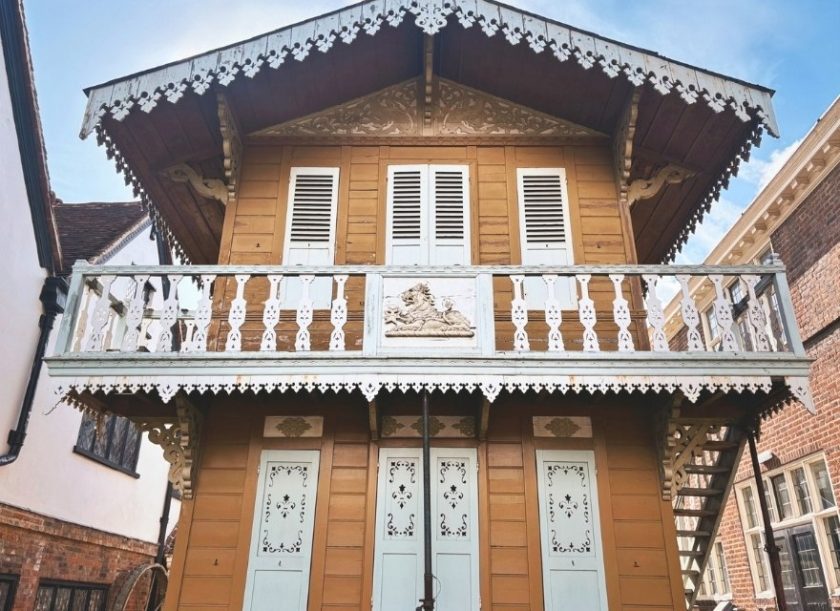
It was originally located in the garden of his home in Gad’s Hill Place and relocate here in the 1960s. If you’re thinking it wouldn’t look out of place in Switzerland, you’re on to something: it was a Christmas present given to Charles Dickens in 1864, arriving as a flat-pack, ready to be assembled on arrival long before IKEA was a thing.
The Huguenot Museum
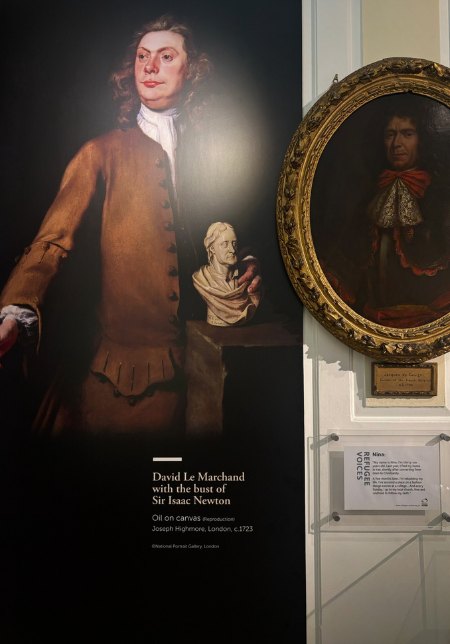
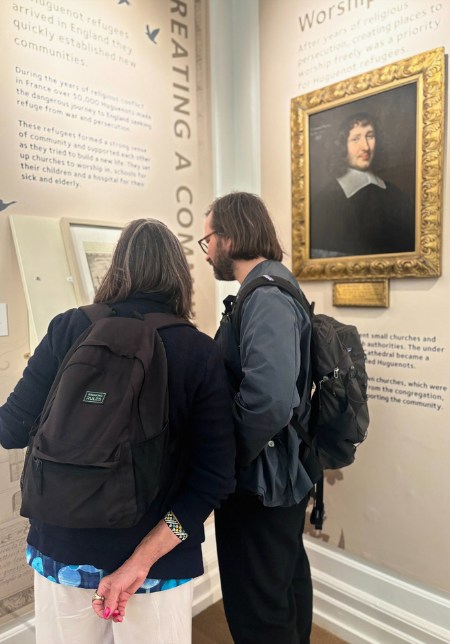
In a nutshell, the Huguenots were French Protestants who fled to England as refugees in the 16th and 17th centuries. France at the time was overwhelmingly Catholic and the Huguenots were seen as heretics. Religious tensions simmered over decades and completely boiled over on the St. Bartholomew’s Day Massacre in 1572, resulting in approximately the death of 10,000 French protestants.
In the aftermath some protections were given to the Huguenots including the right to worship. However, this didn’t last too long. In 1685 the legal tolerance to religious rights ended and Protestantism was banned altogether. Huguenot churches were destroyed, their children were forced to be baptized Catholic, and many faced imprisonment or execution if they refused to convert.
Fearing for their lives the Huguenots fled across Europe. Many came to England, particularly East London (see my post on the history of Brick Lane), Kent, and East Anglia. England – under a Protestant monarchy – welcomed them, seeing them as industrious, skilled workers who excelled as silk weavers, goldsmiths, clock-makers, printers, and bankers.
In the aftermath of the Huguenot’s fleeing France, the loss of skilled workers had a severe impact on the French trade and industry. Inside the museum you will see some examples of their work which became synonymous with quality.
Overall, it’s a very short museum but a worthwhile one. It gives you a sense of how these refugees shaped British history. It’s sobering, beautifully curated, and a reminder that migration is not new – it’s been happening for as long as people need to seek refuge.
Would I visit Rochester again?
Absolutely. For a relatively small place, you can really peel back the layers of history. Charles Dickens brought many of Rochester’s buildings and monuments alive in his novels, and now the town honours his name with pride. So I’m sure anyone with an interest in history, literature, and architecture will find a lot to like about Rochester.
If you have more time at your disposal, I also recommend combining a trip to Rochester with Canterbury located 35 – 50 minutes away by car or train. While a long day trip is doable, it would be better to spend overnight in Canterbury so you can explore at your leisure.
Alternatively, if you’re tempted by thoughts of the sea, you could combine Rochester with Whitstable. It’s a lovely seaside town and easy to reach by public transport or car. There are so many gems in Kent, and these are only a few of them. Hopefully you’ll see them for yourself. Enjoy.



